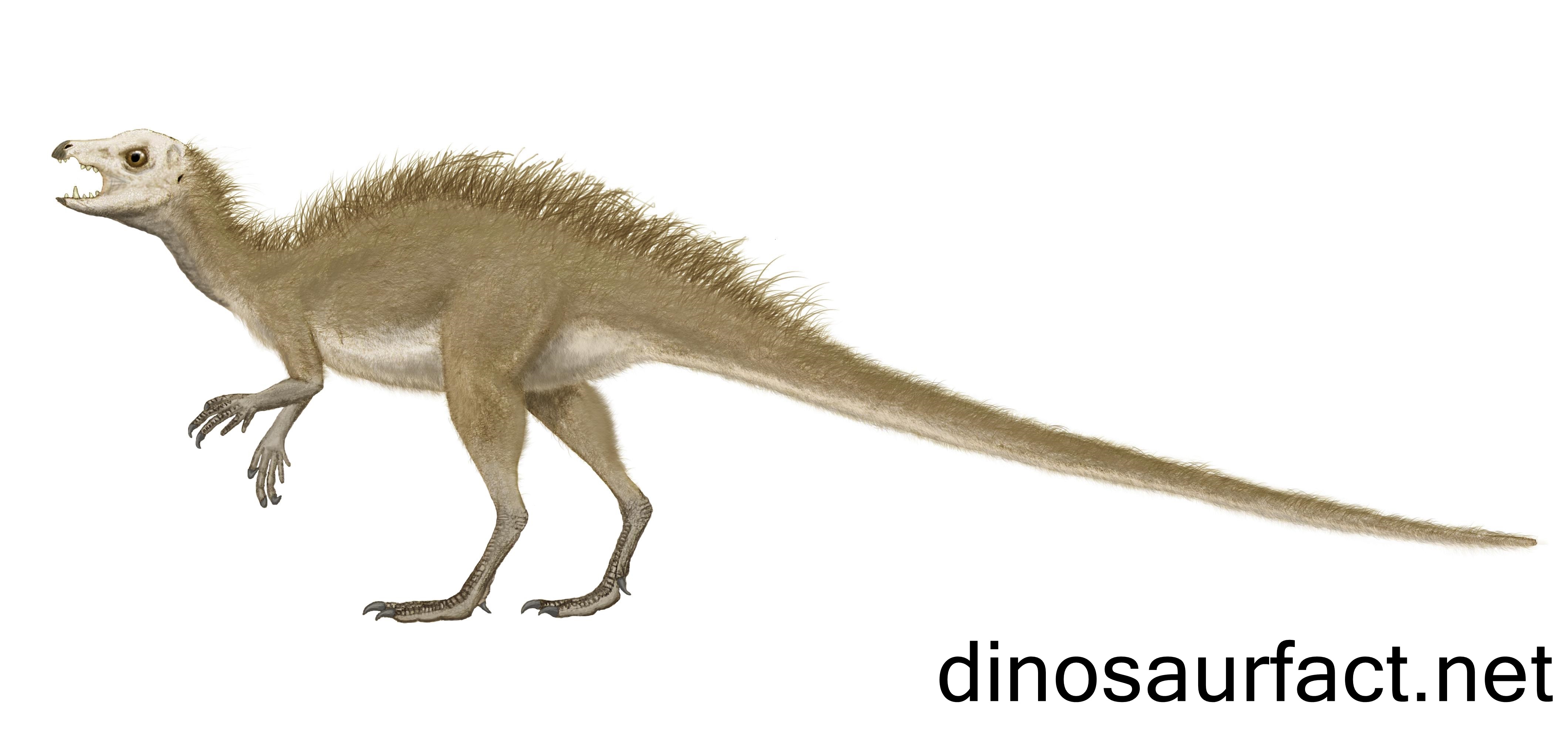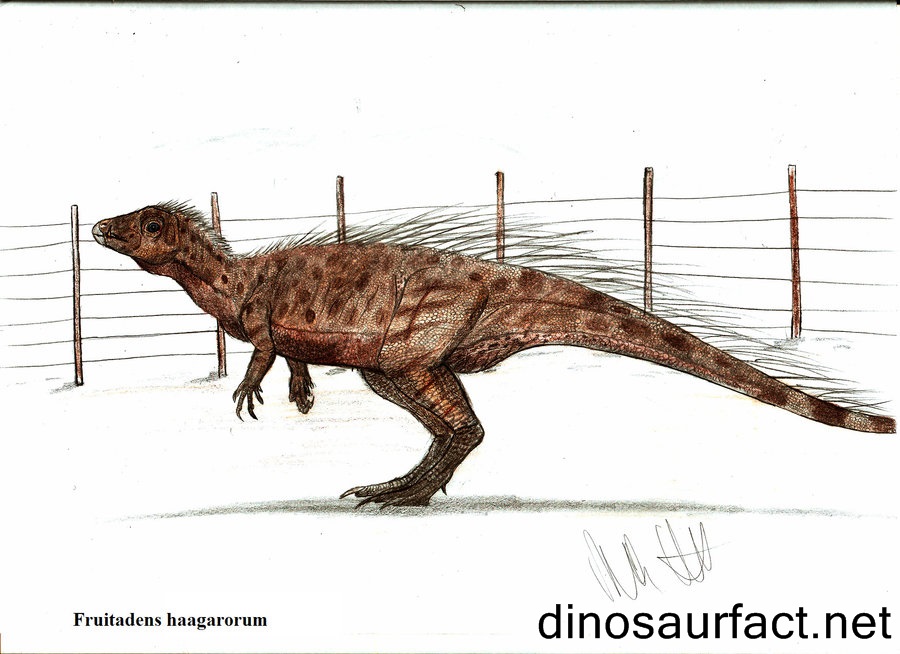 Click to visit the previous dinosaur bio
Click to visit the previous dinosaur bio
 |
|
 |
|
Kingdom: Animalia
Phylum: Chordata
Class: Sauropsida
SuperOrder: Dinosauria
Order: Ornithischia
Family: Heterodontosauridae
Genus: Fruitadens
 |
|
 |
|
 |
|

There is a common perception among the lay population that all dinosaurs were of gigantic dimensions. This theory was stood on its head with the unearthing and subsequent identification of the fossils of the Fruitadens Haagarorum
Etymology
The word Fruitadens is often literally translated and taken to mean “fruit tooth” or “teeth like fruits”. The truth is that the Fruitadens Haagarorum is fundamentally named after the Fruita fossil region of Colorado, United States of America where its fossils were first excavated at the base of the Brushy Basin Member of the Morrison Formation. The creature's full name is Fruitadens Haagarorum. The appellation haagarorum is a tribute to Paul Haaga Jr, President of the Board of Trustees of the Natural History Museum of Los Angeles County where the fossils were stored after discovery..
Finding the Fruitadens
Identification of Fruitadens
Dr. Luis Chiappe is overseeing construction of a detailed, full-scale model of the animal. Fruitadens is a late surviving member of the basic dinosaur family heterodontosuridae, and is the first member of its group to be described from North America.
History of Fruitaden
Physical features of Fruitadens
An adult Fruitadens Haagarorum was around 2 feet long and weighed about 1-2 pounds. It is one of the smallest known dinosaurs ever discovered. Up until 2010, the only known small dinosaurs were the theropods. With the discovery of the Fruitadens Haagarorum, paleontology is left wondering about the limits of dinosaur size. Dinosaurs can range in size, from 2-pound animals like Fruitadens to creatures weighing 50 tons or more like the huge dinosaurs made famous by fiction and Hollywood blockbusters.
The finding that Fruitadens is unique is borne out by its distinctive array of teeth and the structure and positioning of its hind legs. Detailed studies have led to a conclusion that the jaws of heterodontosaurids, including Fruitadens, which survived longer, were adapted for biting at obtuse angles. In contrast, the jaws of the older heterodontosaurids, were apposite for strong jaw operationally at acute angles. There is much paleontological support for the view that that Fruitadens processed its food by a relatively uncomplicated process of puncturing it and, thereafter, crushing it. The Fruitadens had a set of teeth somewhat like that of canines and while there is evidence that some dinosaurs belonging to its family sported hair along the back, there is no evidence to suggest that such was the case with the Fruitadens Haagororum.
These findings suggest that Fruitadens was an biological omnivore, consuming plant material and possibly insects or other invertebrates with equal comfort.
Classification of Fruitaden
Fruitadens has been classified as an ornithopod, and is believed to have been a much smaller relative of heterodontosaurus. Fruitaden belonged to heterodontosaurids, which were one of earliest species of dinosaurs to have evolved. However, Fruitadens Haagarorum is a more recent or shall we say a latterly evolved member of this family. Heterodontosaurids also had the similar unusual combination of teeth like the Fruitadens Haafarorum. The more recent Fruitadens evolved to be smaller and have a more generalized and varied diet. The accepted classification of Fruitadens is Animalia, Chordata, Sauropsida, Dinosauria, Ornithischia, Heterodontosauridae, Fruitaden.
Future discoveries
The Morrison Formation where the fossils of the Fruitaden Haagarorum were discovered covers an area of 600,000 square miles though only a small portion of it has been explored. Fossil experts have been studying the Morrison Formation for more than a century. Dozens of dinosaur species have been discovered there and there is every possibility that there may be many such treasures lying unearthed. Till then the world will celebrate the discovery of Fruitadens Haagarorum.
Index
Extinct Profiles
 Triassic Dinosaurs
Triassic Dinosaurs Jurassic Dinosaurs
Jurassic Dinosaurs Cretaceous Dinosaurs
Cretaceous Dinosaurs Pterosaurs
Pterosaurs Marine Reptiles
Marine Reptiles Dinosaur Extinction
Dinosaur Extinction